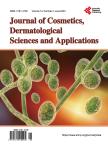Prevention and Treatment of Radiation Induced Skin Damage in Breast Cancer
Prevention and Treatment of Radiation Induced Skin Damage in Breast Cancer作者机构:Radiation Oncology Istituto Nazionale per lo Studio e la Cura dei Tumori-Fondazione “Giovanni Pascale” IRCCS Naples Italy Radiation Oncology Muto-Onlus Foundation of Naples Casavatore Naples Italy Radiation Oncology Second University of Naples Naples Italy U.O.S. of Dermatology P.O. Ascalesi Naples Italy
出 版 物:《Journal of Cosmetics, Dermatological Sciences and Applications》 (化妆品、皮肤病及应用期刊(英文))
年 卷 期:2014年第4卷第1期
页 面:16-23页
学科分类:1002[医学-临床医学] 100214[医学-肿瘤学] 10[医学]
主 题:Skin Toxicity Prevention and Treatment Radiotherapy
摘 要:Introduction: Skin toxicity is a frequent side effect of radio and chemo-treatments in patients treated for breast cancer after conservative surgery. The aim of this paper is to report our experience in the management of skin toxicity evaluating radiotherapy planning and using preventive local aids. Materials and Methods: We have observed 300 patients undergoing radiotherapy. All received the prescription of a prophylactic moisturizing cream. Skin toxicity was valuated according to Acute Radiation Morbidity Scoring Criteria of the RTOG. Moreover, in a subgroup of 100 patients, we correlated the study of breast volume and features of treatment plans, with the addition of topic prophylactic treatment, using an oral therapy based on Resveratrol, Lycopene, Vitamin C and Anthocyanins (Ixor?). In another subgroup, 100 patients were subjected to corneometry assessing numerically skin hydration before, during and after radiotherapy. Results: In all patients, we related skin toxicity and the type of cream used. All patients completed the radiotherapy treatment, and G4 cutaneous toxicity was not observed in any of them. In patients treated with topic treatment and therapy based on Resveratrol, Lycopene, Vitamin C and Anthocyanins (Ixor?), the protective effect of (Ixor?) is more detected in patients with PTV (Planning Target Volume) 500 ml, when Dmax reaches values lower or equal to 107%, but not exceeding 110% of the prescribed dose, and in patients undergoing adjuvant chemotherapy with anthracyclines and taxanes. The values of corneometry allow us to evaluate the moisturizing effect for products used, and identify cases of skin toxicity in a first phase. Conclusions: Our study confirms the value of moisturizers in the prevention and resolution of radiotherapy-induced skin damage. An instrumental assessment of skin hydration with corneometry can help the radiation oncologist to use strategies that prevent the onset of toxicity of high degree.



